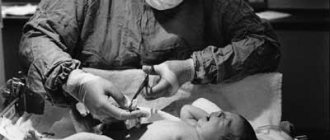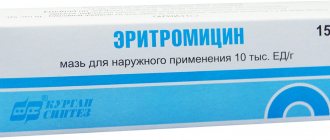What is an umbilical patch?
Arilis umbilical patch
A hernia patch is a specially prepared adhesive device that is used to reliably fix a reduced hernia. It consists of durable material that does not tear during use and is divided into two parts. The product cannot be re-pasted.
You can wear the shepherd for two days, after which it is replaced with a new one, leaving a short period of time between replacements so that the skin has time to smooth out and breathe.
Types and manufacturers of patches for hernial protrusion
Regardless of which brand of patch is used, they are all hypoallergenic and have the same effect. You can purchase the product at any pharmacy. Various options are used at home.
- Hartmann's product is made from soft, durable material adapted to children's skin. This product is supplied in a separate sealed package. The structure of the patch contains a soft fabric cushion. The device does not form wrinkles and adheres perfectly. It has a moisture-repellent surface that prevents the growth of bacteria.
- Chicco patch. It has a soft texture, suitable for babies prone to allergic reactions. The product can be used even with a fragile and barely healed umbilical wound.
- Porofix product. The manufacturer divides devices into two groups, differing in method of use: preventive and therapeutic. The navel patch consists of two parts that are pulled together and prevent protrusion of intestinal loops.
- Arilis patch. Produced in Russia, it is reliable and has a breathable surface. For this purpose, special perforation is provided. The product works on the principle of a buckle and is elastic.

Hartmann

Chicco
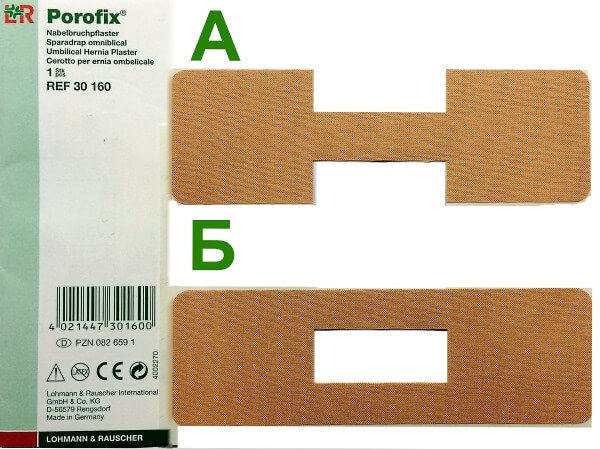
Porofiks
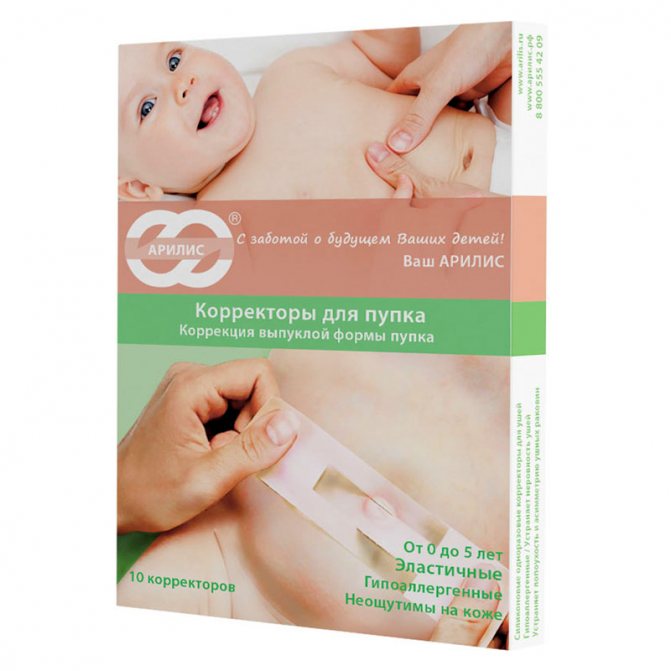
Arilis
Any of the patches must be applied after making sure that the hernia has been reduced. Otherwise, there is a risk of pinching the protrusion.
How the patch works

Anti-hernia bandage
When the patch is applied, the soft tissues of the umbilical ring are compressed, which prevents the constant release of the protrusion and compression of the intestinal fragment between the tissues of the ring. At the same time, the muscles become stronger, intra-abdominal pressure decreases, and over time the hernia completely disappears.
It is necessary to wear a mini-bandage for an umbilical hernia until the first signs of healing of the protrusion: usually the period of conservative treatment is 7-14 days.
It is allowed to use a regular plaster, but it is acceptable only if the hernia is corrected and the skin around the umbilical ring is folded as tightly as possible.
Effective for adults and teenagers
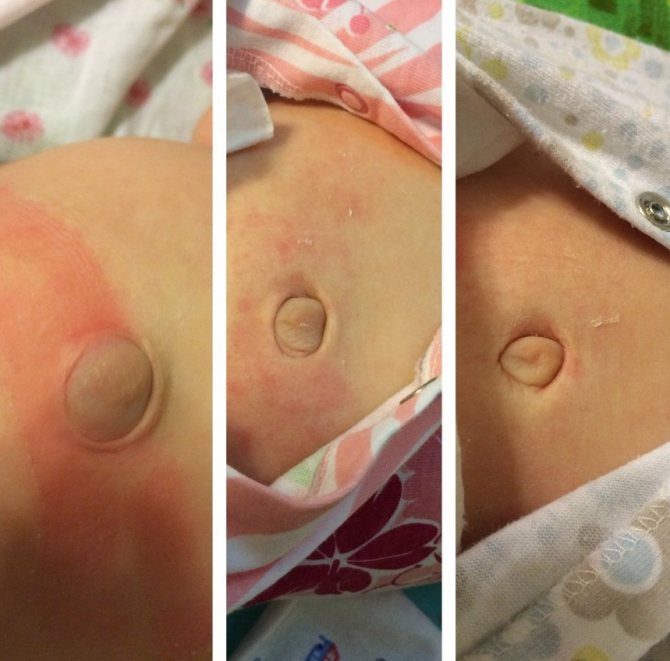
On the right is the result after 14 patches
It is recommended to use the tactic of sealing an umbilical hernia only for children under the age of 5 years. An adhesive plaster for an umbilical hernia for adults is considered useless; wearing a special bandage is prescribed. Adults are prescribed surgery to eliminate a hernial protrusion. This is explained by the fact that muscles lose their elasticity over time; their weakening can be eliminated with special implants.
Reviews about the effectiveness of treatment
- Mara, 35 years old. The surgeon advised us to use the Porofix patch. We went to see a specialist because my son’s belly button protruded and swelled when he cried. After examination, the doctor confirmed the fears: the baby had a hernia. However, the doctor assured that there was nothing to worry about and everything was in our hands. I recommended using the Porofix patch. We walked with the patch for 7 days. There were no allergies. After removing the product, we noticed that the belly button had retracted inward. For another year we periodically visited the surgeon for examination. But the hernia did not appear again;
- Olga, 28 years old. We made do with Chicco plaster. At one month old, my daughter’s belly button began to protrude. The doctor looked at it and prescribed us to use the patch, as well as massage and placing it on the tummy. I don’t know what exactly helped, but after a month the hernia disappeared. So I'm for Chicco. Although the doctor said that if the hernia were more severe, this patch would not have helped us.
Kinesio taping for a spinal hernia is an effective way to improve the patient’s condition by correcting the condition of the muscles, ligaments and tendons. The method involves the application of elastic patches and adhesive tapes, which provide support and relaxation of the tissue. In this case, the healing process occurs naturally without the use of bulky devices, which are often used in orthopedics.
To get the maximum result from the procedure, you need to pay attention to the specifics of applying adhesive tapes.
The kinesio taping procedure involves applying special patches to injured areas, which improves blood circulation in these areas and the injury heals faster. In addition, the use of such patches reduces pain.
The taping process is based on the following principles:
- Elastic tapes are glued to the sore area, leaving them for 3-5 days. Such patches are held in place by a special glue that is odorless, does not leave marks on the skin and does not cause allergic reactions.
- The adhesive begins to act upon first contact with the skin, due to which the tape works as long as the patient wears it.
- The tapes are applied with different tensions, due to which the muscular-fascial segment can be simulated, and the damaged area will receive improved blood circulation.
Today, kinesiotherapy using tapes is gaining wide popularity and distribution in Europe and the USA, and is used in various branches of medicine. This therapy will be especially effective in the treatment of arthritis, osteochondrosis, arthrosis, scoliosis, hernias and other diseases of the musculoskeletal system.
The advantages of kinesiotherapy include:
- speed of action (the patient will be able to feel the effect within 20 minutes after applying the patch);
- can be easily combined with other types of treatment (for example, exercise or physiotherapy);
- due to their high elasticity, tapes do not cause discomfort while wearing them;
- due to the naturalness of the materials, the skin under the patch will breathe;
- the patches are made of a special material that is not afraid of water, which means the patient can take a shower without fear;
- the adhesive ensures a strong application with the skin and leaves no marks.
A herniated disc is a displacement of part of the intervertebral disc due to its deformation. A ruptured disc causes a herniation that bulges back and to the side. It puts pressure on the nerve root and gives rise to inflammatory processes, which are accompanied by swelling, pain and impaired sensitivity. This disease is quite serious and can lead to disability for the patient.
To cure the disease, you can go one of the following ways:
- Surgical intervention is always a risk and requires long rehabilitation afterwards.
- Application of non-invasive practices of Western and Eastern healers. In this case, treatment is carried out without surgery using taping of the sore spot.
The taping procedure for a spinal hernia will include:
- applying 4 tapes to the sore spot using the ligament technique;
- the ribbons are stretched as much as possible and placed on top of each other in the form of a snowflake pattern;
- the center of the pattern should be exactly at the site of the hernia.
The procedure allows you to remove the maximum load from the diseased area, which eliminates muscle tension and pain. The course of treatment can range from 3 to 6 weeks depending on the severity of the disease.
Contraindications to kinesio taping:
- thrombosis of the veins of the lower extremities;
- some skin diseases (oncology, wounds and ulcers);
- very sensitive skin or allergy to the acrylic from which the patch is made;
- personal intolerance;
- severe heart and kidney diseases;
- diabetes;
- first trimester of pregnancy.
For treatment to be effective, it is not enough to use kinesiotherapy exclusively. The doctor will prescribe a comprehensive treatment, which will guarantee a more lasting result.
There are the following methods of treating a patient with intervertebral hernia:
- surgery is an immediate solution to the problem and pain relief. But when it is carried out, there is a risk of injury to the spine, which leads to loss of performance or disability;
- conservative practices - kinesiotaping of the hernia, acupressure, acupuncture and others. These technologies produce results in the medium and long term. They eliminate the factors that provoked the disease and do not pose a threat to the patient’s health if they are carried out under the supervision of doctors;
- taking medications that relieve inflammation. Medicines do not eliminate the causes of the disease, but they weaken its course and increase the chances of overcoming the disease. They are used in combination with conservative methods.
The most interesting treatment method is kinesiotaping of the hernia. This procedure involves applying elastic patches and adhesive tapes (tapes) to the body to support muscles, accelerate blood circulation and relieve tissue tension. It is performed at home and does not pose a threat to the patient’s health.
Read BBTape customer reviews
You can leave your feedback using the form below.
Indications and contraindications
The first taping of an umbilical hernia should be performed by a healthcare professional. After which the specialist will explain to parents the correct tactics for sealing the strips. However, there are indications and contraindications for use. It all depends on how extended the umbilical ring is. The use of tapes (wide adhesive strips) is allowed for newborns with congenital hernial protrusions.
It is prohibited to wear the patch in several situations:
- when observing pinching;
- in the presence of umbilical diseases;
- for complex allergic reactions;
- for prickly heat, diaper rash.
The use of anti-hernia patches is allowed for premature babies only after an individual consultation with a neonatologist.
How to properly secure and seal an umbilical hernia in newborns
Parents need to know how to repair an umbilical hernia in newborns; To prevent the development of the disease, patches are used that fix the position of the navel and provide air access to the skin areas under the bandage. Treatment of the disease in infants is carried out under the supervision of doctors, and the use of non-sterile means and traditional methods can lead to the development of complications and the need for surgical intervention.
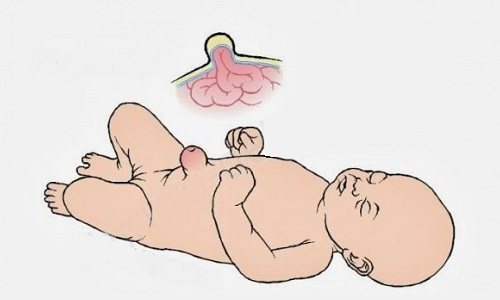
Treatment of umbilical hernia in infants is carried out under the supervision of doctors.
Features of using adhesive plaster
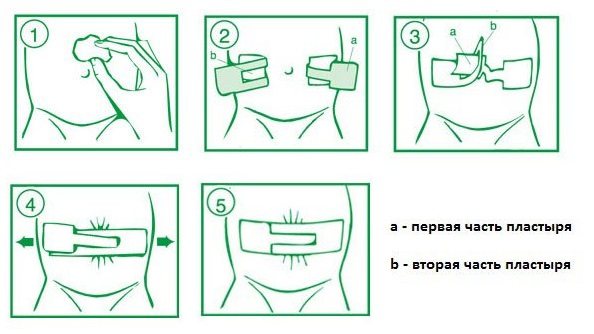
Rules for attaching the Porofix patch
Correct fastening of the plaster when reducing a hernia is an important condition. If you glue it incorrectly, complications may arise, including pinching and necrosis of the intestine. Follow the instructions.
- Wipe the skin around the navel with a damp cloth and dry thoroughly.
- Next, measure a distance of 3-4 cm from the navel to the left and right.
- Alternately glue both parts to the visually indicated places.
- Now we thread one part into the other and securely glue it to the skin.
- It is best to remove the adhesive during bathing: after the adhesive has completely soaked.
- Under water, remove the patch and carefully remove the remaining fixing agent.
- Dry the skin and let it rest for 10-15 minutes. Then we put on a clean patch again.
If you notice difficulty in removing sticky residue, you need to lubricate the sealed area with baby cream.
Do not remove the adhesive plaster on dry skin. This will cause irritation and can seriously injure the upper part of the epithelium.
Positive dynamics as a result of using a patch for sealing an umbilical hernia may appear after the third procedure. However, this method of reduction should be continued for another 14-30 days.
Symptoms
With spinal hernias, the following symptoms are observed:
- constant or periodic pain that increases with changes in body position. Typically, they occur in the lumbosacral region, less often in the thoracic or cervical spine;
- impairment of motor activity - inability to run, squat, or perform physical exercises. Acute forms of the disease lead to loss of ability to self-care;
- tingling sensations and “goosebumps”, increased sensitivity, numbness.
With spinal hernias, pain may occur in the buttocks, lower legs, and thighs. Patients often feel weak, get tired when walking, and have problems with urination, potency, and defecation.
The symptoms of the disease depend on its form. Hernias of the spine are observed in the thoracic, cervical and lumbosacral regions. Each type of disease affects the body differently.
It is impossible to diagnose a spinal hernia on your own. Magnetic resonance imaging is performed to detect the disease.
General recommendations from E. Komarovsky

Before sealing the hernia, it is recommended to carry out a preventive massage with soothing oil
To ensure that the procedure is safe and painless throughout, the famous pediatrician E. Komarovsky advises observing some nuances when using an anti-hernia patch.
- It is not necessary to wear the patch for several days; it is advisable to replace it in a timely manner. For example, once a day, while swimming.
- After contact with water, the patch begins to get wet, so it is better to remove it. Especially if the baby's umbilical wound is not yet closed.
- To ensure that the effect appears faster and is not false, before sealing the bulge, it is recommended to do a preventive massage with baby soothing oil.
- Make sure your baby cries less. Because of this, pressure in the abdominal cavity increases and healing is delayed.
- Do not forget to wash the baby's skin around the umbilical area with soap. This procedure creates a disinfecting effect.
- The hands of the parent who is removing the hernial bulge must be washed.
- It is always necessary to use the same brand, since the baby’s body quickly develops a habit of the selected material.
- You should choose products with visible perforations, and do not place any objects under them to increase the likelihood of reduction.
Basically, all patches are designed to prevent the appearance of a hernia and have positive reviews from users and specialists. Pediatricians prescribe this remedy for restless children or those who have some health problems.
In the first months of life, children who are predisposed to protrusion are prescribed to wear a navel patch.
Step-by-step instructions for use
How exactly the patch should be applied to the umbilical hernia depends on the type of product and its shape, so parents should be sure to read the instructions before using this type of product.
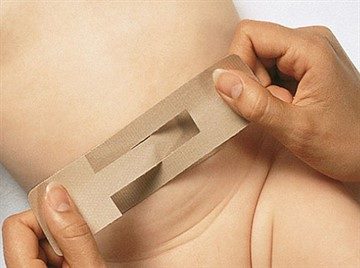
However, there are some general rules for using this type of device:
- The patch can only be used on a healed navel. Do not use the product on a bleeding, weeping, festering umbilical ring;
- all manipulations should be carried out only with clean hands;
- Before use, you need to make sure that the baby does not have any kind of pinching. Usually their presence is indicated by redness of the skin in the navel area;
- before gluing the patch, the navel is carefully pushed inward with a finger and only after that the product is used;
- the skin around the reduced hernia is gathered into folds and then fixed with the sticky surface of a plaster.
Parents can also use a regular bactericidal patch as a fixative. In this case, the general rules of application remain the same. But you still have to consult a doctor about the rules for using the usual version of the product.


